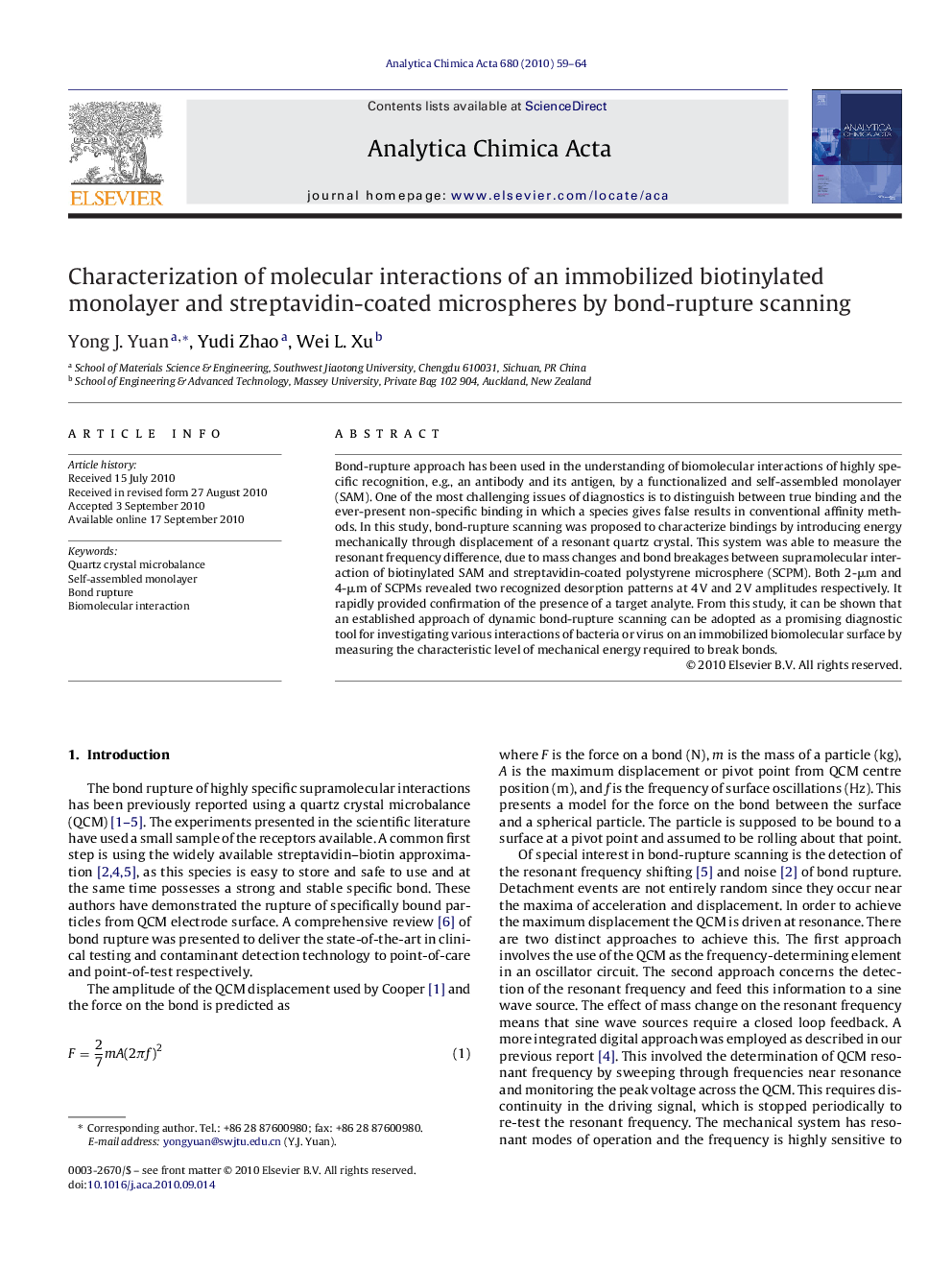| Article ID | Journal | Published Year | Pages | File Type |
|---|---|---|---|---|
| 1167698 | Analytica Chimica Acta | 2010 | 6 Pages |
Bond-rupture approach has been used in the understanding of biomolecular interactions of highly specific recognition, e.g., an antibody and its antigen, by a functionalized and self-assembled monolayer (SAM). One of the most challenging issues of diagnostics is to distinguish between true binding and the ever-present non-specific binding in which a species gives false results in conventional affinity methods. In this study, bond-rupture scanning was proposed to characterize bindings by introducing energy mechanically through displacement of a resonant quartz crystal. This system was able to measure the resonant frequency difference, due to mass changes and bond breakages between supramolecular interaction of biotinylated SAM and streptavidin-coated polystyrene microsphere (SCPM). Both 2-μm and 4-μm of SCPMs revealed two recognized desorption patterns at 4 V and 2 V amplitudes respectively. It rapidly provided confirmation of the presence of a target analyte. From this study, it can be shown that an established approach of dynamic bond-rupture scanning can be adopted as a promising diagnostic tool for investigating various interactions of bacteria or virus on an immobilized biomolecular surface by measuring the characteristic level of mechanical energy required to break bonds.
